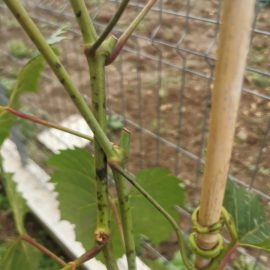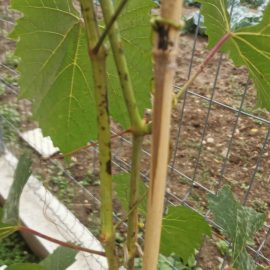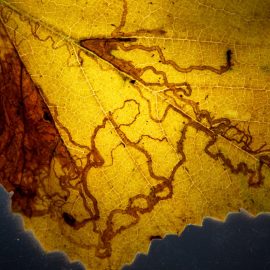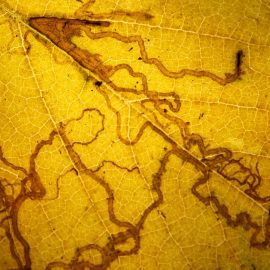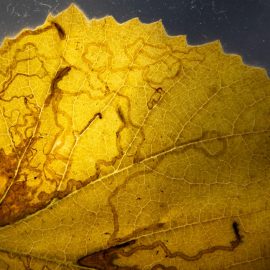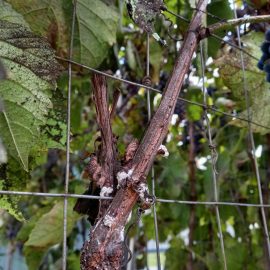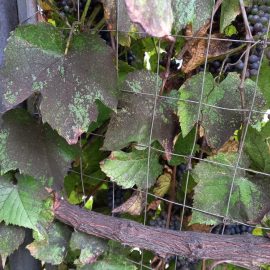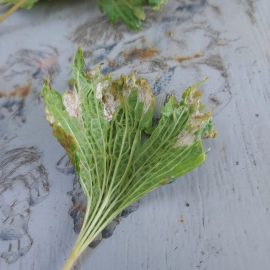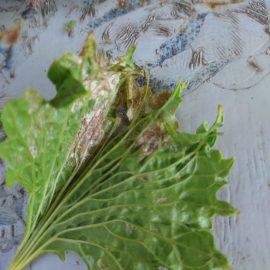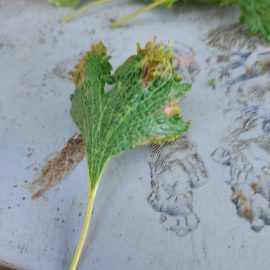Care works for grapevines in the fruiting stage
Published on: January 22, 2022 Modified on: 1 May 2024
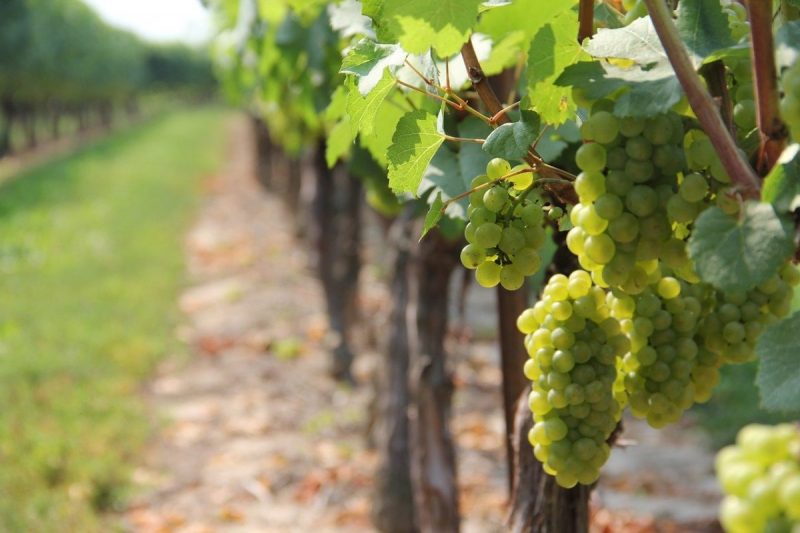
Once the grapevines enter the fruiting stage, a series of specific works are carried out in the vineyards, the aim of which is to maximize grape production, both quantitatively and qualitatively. These works also influence a series of aspects such as the increase of the stumps longevity, maintenance of the plants density, prevention of diseases and pests attacks, etc.
For this purpose, the care works are of different types: carried out directly on the plant (fructification pruning, works in green, steering the vines, cutting the roots, treatments against diseases and pests, etc.), soil works (loosening the soil at the surface, irrigation, fertilization, herbicide application, soil erosion prevention works), inspection of the vineyard props.
Care works carried out directly on the plant
One of the most important works to be carried out is pruning, which has the purpose of achieving an adequate balance between growth and fruiting, thus obtaining superior harvests, both in terms of quality and quantity. An advantage is the fact that this process facilitates the other care works as well.
Cutting systems. They are defined based on the wood elements left on the stump, following the cuttings (spurs, canes, cordons, buds), as well as by their number and length. Thus, we have three systems: short, long and mixed.
Ways of steering the plants. They are established by the height at which the fruiting bodies are placed in relation to the soil, as well as their space orientation. Thus, we distinguish the following ways of steering: low, semi-high and high.
Types of pruning. They result from the combination of the cutting system and the types of plant steering, as well as the direction of the vines left on the trunk after pruning. Thus, as types of pruning, we mention: Teremia type and pruning at the arm level (Multiple Guyot, Guyot on the stem, Guyot with raised arms, Cazenave cordon, Speronat cordon, Lenz Moser cordon, Sylovoz cordon).



Dry trimming is classified according to its purpose, respectively: shape correction cuts (which are carried out during the first 3-5 years after planting the grapevine), fructification pruning (the most important ones are carried out every year, after the end of the fruiting stage, for 25-35 years) and renewal pruning.
According to the applied method, pruning is classified into manual, semi-mechanized and mechanized. According to the season, autumn, winter and spring cuttings are distinguished.
Shape correction cuts. They are carried out in the first 2-3 years after planting in the case of low steering or in the first 5-6 years for semi-high and high steering. They are considered to be finished, when the vines and the fruit elements specific to the type of steering and to the chosen type of pruning have been formed and when the stumps have occupied the entire space allocated for planting.
Recommended products
-
You can find products on a different store
Change Store -
You can find products on a different store
Change Store -
You can find products on a different store
Change Store -
You can find products on a different store
Change Store -
You can find products on a different store
Change Store -
You can find products on a different store
Change Store -
You can find products on a different store
Change Store -
You can find products on a different store
Change Store -
You can find products on a different store
Change Store -
You can find products on a different store
Change Store -
You can find products on a different store
Change Store -
You can find products on a different store
Change Store -
You can find products on a different store
Change Store -
You can find products on a different store
Change Store -
You can find products on a different store
Change Store -
You can find products on a different store
Change Store -
You can find products on a different store
Change Store -
You can find products on a different store
Change Store -
You can find products on a different store
Change Store -
You can find products on a different store
Change Store -
You can find products on a different store
Change Store -
You can find products on a different store
Change Store -
You can find products on a different store
Change Store -
You can find products on a different store
Change Store
Each shape correction cut has certain particularities, depending on the type of steering and the chosen cutting system, e.g. multiple Guyot (low steering, mixed cutting system), Guyot with raised arms (semi-high steering, mixed cutting system), etc.
Special cuttings
These cuttings are carried out in case of climatic accidents (winter frosts or late spring frosts, hail during the vegetative growth period), that can cause significant damage to the plantations.
Recovery of plantations affected by hailstorms
Hail is a climatic accident that causes significant damage to grapevines, as it can affect all organs of the stump: leaves, shoots, inflorescences, vines and can lead to the complete loss of the production of the current year, but also in the subsequent years. The destruction consists in tears in the leaves, shoots and inflorescences, grape falling and cracking, must leaking, the occurrence of pathogens, tears in the bark, etc.
The damages caused are also influenced by the phenophase during which the hailstorm occurred, its size, intensity and whether it was accompanied by rain or not.
If hail falls in the first part of the vegetation period, plants recover more easily and a series of measures are taken in order to recover production:
- If hail falls at bud break, instead of the destroyed shoots, new ones will form at the base of the cords that have not started growing and from dormant buds. Thus, the fruit elements for next year will be provided, being recovered a part of the current year’s production.
- If the hail has been very strong, all the damaged parts will be removed, even the wood formations that are badly damaged. Generally, 3-4 green spurs of the unaffected sprouts are left on the stump, with 2 buds each, as close as possible to the multiannual wood.
- After the hail has fallen (the first 12 hours) it is recommended to apply copper fungicides, in order to favor the healing of the wounds.
Recommended products
-
You can find products on a different store
Change Store -
You can find products on a different store
Change Store -
You can find products on a different store
Change Store -
You can find products on a different store
Change Store -
You can find products on a different store
Change Store -
You can find products on a different store
Change Store -
You can find products on a different store
Change Store -
You can find products on a different store
Change Store -
You can find products on a different store
Change Store -
You can find products on a different store
Change Store -
You can find products on a different store
Change Store -
You can find products on a different store
Change Store -
You can find products on a different store
Change Store -
You can find products on a different store
Change Store -
You can find products on a different store
Change Store -
You can find products on a different store
Change Store -
You can find products on a different store
Change Store -
You can find products on a different store
Change Store -
You can find products on a different store
Change Store -
You can find products on a different store
Change Store -
You can find products on a different store
Change Store -
You can find products on a different store
Change Store -
You can find products on a different store
Change Store -
You can find products on a different store
Change Store
If the hail falls in the second part of the vegetation period (June-July), when the sprouts have started to lignify, it can cause more damage, as the growth is slower and the stump organs will be more difficult to recover, relying on reserve substances. By reducing the reserve substances, the resistance of the vines to frost will also decrease.
Measures that can be applied:
- The only method to recover stumps is spring pruning.
- At spring pruning, short fruiting spurs will be left on the stumps, respectively, spurs with 3-4 buds or only 2 buds, and if there are healthy cords, canes with 5-6 buds.
- The load left on the stump is about 30-40 buds.
- It is recommended to apply treatments with copper fungicides, as well as additional fertilizers that favor the growth and maturation of the wood.
Other works to be carried out in the vineyard in the fruiting phase: root pruning, choosing the direction of the fruiting cords growth, trellising of stems and cordons, revision of trellis posts, fruiting cords orientation.
Works and operations in green
These works are executed during the vegetation period in order to regulate the growth and fruiting processes, influencing mainly the quality of the production.



Thus, there are works applied to the sprouts (weeding, tying or steering the sprouts, top removal, pinching, thinning-out), to the inflorescences and grapes (controlling the inflorescence load on a stump – thinning the inflorescences, suppressing parts of the inflorescence) and to the foliage (partial defoliation).
Soil works. In vineyards are works that are carried out in order to maintain the soil loose, to ensure the availability of nutrients, to destroy weeds, and to activate the chemical and biological processes in the soil.
Thus, as soil works, there are:
- Removing the mound layering;
- Spring plowing;
- Deep soil loosening on each row;
- Superficial soil loosening;
- Mulching;
- Autumn plowing.
Applying herbicides in vineyards
Weed removal is an important work in vineyards, as weeds compete for water and nutrients with the plants, but also create a microclimate conducive to the occurrence and development of pathogens. However, herbicides must be integrated in the set of agro-phytotechnical measures that are applied to the soil, along with the works that are carried out, the fertilization and the irrigation.
Soil works have a major impact in the case of integrated weed management programs, and herbicides come as a supplement, contributing to the total destruction of weeds, while reducing to a minimum the number of works applied to the soil.
The treatment will be carried out in vineyards with specific herbicides, depending on the weeds that need to be controlled, the period of application, strictly adhering to the manufacturer’s recommendations, which can usually be found on the product label.
Recommended products
-
You can find products on a different store
Change Store -
You can find products on a different store
Change Store -
You can find products on a different store
Change Store -
You can find products on a different store
Change Store -
You can find products on a different store
Change Store -
You can find products on a different store
Change Store -
You can find products on a different store
Change Store -
You can find products on a different store
Change Store -
You can find products on a different store
Change Store -
You can find products on a different store
Change Store -
You can find products on a different store
Change Store -
You can find products on a different store
Change Store -
You can find products on a different store
Change Store -
You can find products on a different store
Change Store -
You can find products on a different store
Change Store -
You can find products on a different store
Change Store -
You can find products on a different store
Change Store -
You can find products on a different store
Change Store -
You can find products on a different store
Change Store -
You can find products on a different store
Change Store -
You can find products on a different store
Change Store -
You can find products on a different store
Change Store -
You can find products on a different store
Change Store -
You can find products on a different store
Change Store
Grapevine fertilization
The fertilization of the grapevine is an extremely important work and has as its basic principle the providing of nutrients in a sufficient quantity, both to restore the health of the soil and to ensure the quantities needed by the grapevine, without having a negative effect on the end products (must, grapes, wine). In addition to the application of organic fertilizers, an important role is played by chemical fertilization.
Recommended products
-
You can find products on a different store
Change Store -
You can find products on a different store
Change Store -
You can find products on a different store
Change Store -
You can find products on a different store
Change Store -
You can find products on a different store
Change Store -
You can find products on a different store
Change Store -
You can find products on a different store
Change Store -
You can find products on a different store
Change Store -
You can find products on a different store
Change Store -
You can find products on a different store
Change Store -
You can find products on a different store
Change Store -
You can find products on a different store
Change Store -
You can find products on a different store
Change Store -
You can find products on a different store
Change Store -
You can find products on a different store
Change Store -
You can find products on a different store
Change Store -
You can find products on a different store
Change Store -
You can find products on a different store
Change Store -
You can find products on a different store
Change Store -
You can find products on a different store
Change Store -
You can find products on a different store
Change Store -
You can find products on a different store
Change Store -
You can find products on a different store
Change Store -
You can find products on a different store
Change Store
Thus, specific chemical fertilizers should be applied in vineyards, with doses established according to the soil analysis, as well as other factors: the variety and rootstock used, the specific nutritional needs, the water regime, the expected harvest.
Also, besides the fertilization with products that are applied to the soil, in order to correct deficiencies, specific fertilizers are also used, which are applied by foliar spraying.
Recommended products
-
You can find products on a different store
Change Store -
You can find products on a different store
Change Store -
You can find products on a different store
Change Store -
You can find products on a different store
Change Store -
You can find products on a different store
Change Store -
You can find products on a different store
Change Store -
You can find products on a different store
Change Store -
You can find products on a different store
Change Store -
You can find products on a different store
Change Store -
You can find products on a different store
Change Store -
You can find products on a different store
Change Store -
You can find products on a different store
Change Store -
You can find products on a different store
Change Store -
You can find products on a different store
Change Store -
You can find products on a different store
Change Store -
You can find products on a different store
Change Store -
You can find products on a different store
Change Store -
You can find products on a different store
Change Store -
You can find products on a different store
Change Store -
You can find products on a different store
Change Store -
You can find products on a different store
Change Store -
You can find products on a different store
Change Store -
You can find products on a different store
Change Store -
You can find products on a different store
Change Store
Irrigation. In general, in vineyards, due to the strong root system, which explores a large volume of the soil, the grapevine has a good resistance to drought, but in arid areas, it responds well to irrigation.
As a guideline, it is recommended to use the irrigation rules, the total volume of water, which is applied during a vegetative growth period, between 1 000 and 2 500 m³ / ha. This volume is applied by watering 2-4 times, in July-August, using 400-800 m³ / ha per watering.
Controlling diseases and pests in vineyards. Grapevines are susceptible to the attack of certain diseases (Peronosporales, powdery mildew), various pests (European grapevine moth, woolly apple aphid, European fruit lecanium, etc.), especially in years when the climatic conditions are conducive to their occurrence and development. For control, it is recommended to carry out treatments with specific insecticides and fungicides, in accordance with the recommendations on the product label, depending on the pathogen / pest targeted.
Recommended products
-
You can find products on a different store
Change Store -
You can find products on a different store
Change Store -
You can find products on a different store
Change Store -
You can find products on a different store
Change Store -
You can find products on a different store
Change Store -
You can find products on a different store
Change Store -
You can find products on a different store
Change Store -
You can find products on a different store
Change Store -
You can find products on a different store
Change Store -
You can find products on a different store
Change Store -
You can find products on a different store
Change Store -
You can find products on a different store
Change Store -
You can find products on a different store
Change Store -
You can find products on a different store
Change Store -
You can find products on a different store
Change Store -
You can find products on a different store
Change Store -
You can find products on a different store
Change Store -
You can find products on a different store
Change Store -
You can find products on a different store
Change Store -
You can find products on a different store
Change Store -
You can find products on a different store
Change Store -
You can find products on a different store
Change Store -
You can find products on a different store
Change Store -
You can find products on a different store
Change Store
Recommended products
-
You can find products on a different store
Change Store -
You can find products on a different store
Change Store -
You can find products on a different store
Change Store -
You can find products on a different store
Change Store -
You can find products on a different store
Change Store -
You can find products on a different store
Change Store -
You can find products on a different store
Change Store -
You can find products on a different store
Change Store -
You can find products on a different store
Change Store -
You can find products on a different store
Change Store -
You can find products on a different store
Change Store -
You can find products on a different store
Change Store -
You can find products on a different store
Change Store -
You can find products on a different store
Change Store -
You can find products on a different store
Change Store -
You can find products on a different store
Change Store -
You can find products on a different store
Change Store -
You can find products on a different store
Change Store -
You can find products on a different store
Change Store -
You can find products on a different store
Change Store -
You can find products on a different store
Change Store -
You can find products on a different store
Change Store -
You can find products on a different store
Change Store -
You can find products on a different store
Change Store
At the same time, it is recommended to use specific traps for the monitoring and early detection of pests.
Recommended products
-
You can find products on a different store
Change Store -
You can find products on a different store
Change Store -
You can find products on a different store
Change Store -
You can find products on a different store
Change Store -
You can find products on a different store
Change Store -
You can find products on a different store
Change Store -
You can find products on a different store
Change Store -
You can find products on a different store
Change Store -
You can find products on a different store
Change Store -
You can find products on a different store
Change Store -
You can find products on a different store
Change Store -
You can find products on a different store
Change Store -
You can find products on a different store
Change Store -
You can find products on a different store
Change Store -
You can find products on a different store
Change Store -
You can find products on a different store
Change Store -
You can find products on a different store
Change Store -
You can find products on a different store
Change Store -
You can find products on a different store
Change Store -
You can find products on a different store
Change Store -
You can find products on a different store
Change Store -
You can find products on a different store
Change Store -
You can find products on a different store
Change Store -
You can find products on a different store
Change Store
Harvesting. Grape harvesting is one of the most important technological processes, which requires a greater volume of work. In addition, the quantity and quality of the obtained product largely depend on this work. In the case of table grapes, the time of harvest is when they present the characteristics of the variety, which make them suitable for consumption. These can be determined organoleptically or by laboratory analysis.
Grapes for wine are harvested at technological maturity, when they have the characteristics of composition (acidity, sugar content, coloring substances for black varieties, etc.) and the qualities needed to obtain a certain type of wine.


















































































































































































































































































































































































































































